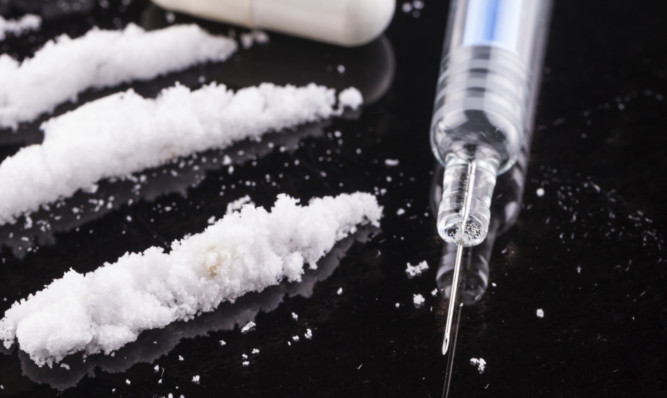The average number of people dying because of drug abuse in Dundee has more than trebled over the last decade, shock statistics have revealed.
New figures show there were 31 drug-related deaths in Dundee last year, up from 24 the year before.
There were 46 fatalities in Fife, eight in Angus and nine in Perth and Kinross.
Those figures mean Dundee again has the highest rate of drug-related deaths in the country, with 0.20 deaths for every 1,000 people living in the city.
But the five-year average shows how Dundee is still failing to get to grips with the scourge of drug abuse.
Between 2000 and 2004 the average number of drug-related deaths a year stood at just nine.
Between 2010 and 2014 that rose to an average of 30 deaths a year.
Across Scotland there were 613 drug-related deaths last year, 86 more than the previous year.
More than two-thirds of fatalities involved people over the age of 35 while three-quarters of deaths involved men.
Heroin and opiates were found in most cases but 90% of deaths involve a combination of drugs and alcohol.
In the majority of cases (77%) the underlying cause of death was recorded as accidental poisoning.
Scottish Government minister for community safety and legal affairs Paul Wheelhouse said: “The figures published today highlight that while there has been some progress in tackling problem drug use, Scotland still faces a huge challenge in tackling the damaging effects of long-term drug use among an aging cohort of individuals in Scotland.
“Scotland has for some years faced the difficult task of rehabilitating a generation of individuals with a history of problem drug use. That is why earlier this year the Scottish Drugs Forum set up a group that specifically works with older drug users.
“Through Scottish Government support and funding, the group will identify and understand the current needs of this vulnerable cohort of drug users and will seek to predict their future medical and support needs in order to curb the worrying upward trend in fatalities.”
Although the number of deaths involving the use of so-called “legal highs” remained static, Mr Wheelhouse said the Scottish Government is working with its UK counterpart to restrict the sale of these substances.
Roy Robertson, chairman of the National Forum on Drug Related Deaths, said: “Older drug users are most susceptible because their often frail health cannot sustain a life of polysubstance misuse, including alcohol use, and injecting related problems.
“Although the final mechanism of death may be recorded as an overdose, years of high risk drug use, blood borne virus infections, smoking and alcohol consumption combine to increase their vulnerability.”
NHS Tayside director of public health and chair of the Tayside Drug Death Review Group Dr Drew Walker said: “Substance misuse is a major public health issue at national level and remains a priority for NHS Tayside.
“The number of drug deaths locally has fluctuated over the past few years, however there has been a concerning rise in the past decade and a great deal of work has been going on to address the problem.
“This has included development of overdose awareness training and the take home Naloxone programme, improvements in communication and prescribing practice amongst practitioners and service development work within the Alcohol and Drug Partnerships to develop recovery orientated systems of care that include early intervention for children of parents affected by substance misuse.
“The members of the Tayside Drug Death Review Group are not complacent and will continue to closely monitor the situation and work to reduce and prevent these tragic deaths.”
